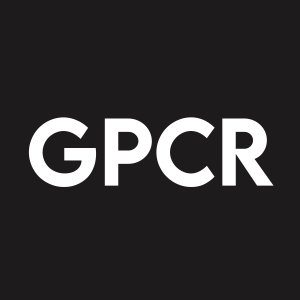Structure Therapeutics Announces Two Late-Breaking Poster Presentations at the American Diabetes Association 85th Scientific Sessions Including New Preclinical Data for Oral Small Molecule Amylin Agonist, ACCG-2671
Rhea-AI Summary
Positive
- ACCG-2671 demonstrated significant dose-dependent weight loss effects in preclinical studies
- Combination therapy with semaglutide showed superior weight loss compared to monotherapy
- ACCG-2671 expected to enter clinical development by end of 2025
- Company's GLP-1 receptor agonist showed promising neuroprotective effects in Parkinson's disease models
Negative
- ACCG-2671 is still in preclinical stage with no human data available yet
- Clinical development timeline extends to end of 2025, indicating a long path to potential commercialization
Insights
Structure Therapeutics' oral amylin agonist shows promising preclinical weight loss data, especially in combination with GLP-1s, signaling potential competitive positioning in obesity market.
Structure Therapeutics is advancing an intriguing oral small molecule amylin agonist (ACCG-2671) that could potentially shake up the competitive landscape in obesity treatment. The preclinical data being presented at ADA demonstrates dose-dependent weight reduction in diet-induced obese rats, but what's particularly compelling is the superior weight loss achieved when combined with semaglutide (Wegovy/Ozempic).
This combination approach aligns with the industry's evolving strategy of multi-target therapies for obesity. Amylin receptor agonism is indeed gaining clinical validation through injectable peptides like Eli Lilly's retatrutide (GLP-1/GIP/amylin) and Novo Nordisk's cagrisema (GLP-1/amylin). However, Structure's oral small molecule approach offers a critical differentiation that could significantly improve patient convenience and potentially adherence.
The secondary presentation on their GLP-1 receptor agonist GSBR-5595 showing neuroprotective effects in Parkinson's disease models suggests the company is exploring broader applications beyond metabolic disorders. This reflects the growing understanding of GLP-1 mechanisms beyond glucose control, potentially expanding their market opportunity.
With ACCG-2671 expected to enter clinical development by end of 2025, Structure is positioning itself as an emerging player in the increasingly crowded but enormous obesity market. Their oral small molecule approach could offer significant advantages over injectable competitors if efficacy proves comparable in human trials. The combination data is particularly notable as it suggests potential for use alongside existing GLP-1 therapies rather than competing directly against established players.
SAN FRANCISCO, June 20, 2025 (GLOBE NEWSWIRE) -- Structure Therapeutics Inc. (NASDAQ: GPCR), a clinical-stage global biopharmaceutical company developing novel oral small molecule therapeutics for metabolic diseases, today announced two upcoming late-breaking poster presentations at the American Diabetes Association 85th Scientific Sessions, being held from June 20-23 in Chicago, IL.
“The amylin receptor is rapidly gaining clinical validation as a key target in obesity, driven by encouraging data from injectable peptide programs. We believe ACCG-2671 is well-positioned and differentiated as an oral small molecule frontrunner that is expected to enter clinical development by the end of 2025,” said Raymond Stevens, Ph.D., Founder and CEO of Structure Therapeutics. “The preclinical data being presented at ADA include the robust weight-loss effects of ACCG-2671 alone and in combination with a GLP-1 receptor agonist underscoring ACCG-2671’s potential as a future small molecule backbone treatment for obesity. In addition, we will present data demonstrating the neuroprotective effects of GLP-1 receptor agonism in preclinical models of Parkinson’s disease, reinforcing the broad role of the GLP-1 receptor across different diseases.”
Presentation Details:
Title: Novel Oral Small Molecule ACCG-2671: A Dual Amylin and Calcitonin Receptor Agonist Development Candidate for Obesity Therapy
Poster #: 2184-LB
Session: Late Breaking Poster Session
Date: Sunday, June 22
Time: 12:30 p.m. – 1:30 p.m. CT
Summary: ACCG-2671 demonstrated high binding affinity and balanced potency in human calcitonin receptor (CTR) and amylin receptor (AMY3R) functional assays. In diet-induced obese rats, oral administration of ACCG-2671 resulted in significant, dose-dependent body weight reductions. Combination therapy with semaglutide (both as add-on and concurrent treatment) resulted in superior weight loss compared to monotherapy.
Title: Oral Small Molecule GLP-1 Receptor Agonist Demonstrates Beneficial Effects in Parkinson's Disease–Like Model Using Humanized GLP-1R Mice
Poster #: 1985-LB
Session: Late Breaking Poster Session
Date: Sunday, June 22
Time: 12:30 p.m. – 1:30 p.m. CT
Summary: In a Parkinson’s disease mouse model, oral administration of GSBR-5595, a small molecule GLP-1 receptor agonist distinct from Structure Therapeutics’ clinical asset aleniglipron (GSBR-1290), significantly improved motor coordination and movement in both the rotarod and open field tests. Additionally, histopathological analyses revealed a significant increase in dopaminergic neurons. These findings suggest this GLP-1 receptor agonist showed neuroprotective effects by mitigating motor deficits and preserving dopaminergic neurons, highlighting a potential benefit in Parkinson’s disease.
About Structure Therapeutics
Structure Therapeutics is a science-driven clinical-stage biopharmaceutical company focused on discovering and developing innovative oral small molecule treatments for chronic metabolic and cardiopulmonary conditions with significant unmet medical needs. Utilizing its next generation structure-based drug discovery platform, the Company has established a robust GPCR-targeted pipeline, featuring multiple wholly-owned proprietary clinical-stage oral small molecule compounds designed to surpass the scalability limitations of traditional biologic and peptide therapies and be accessible to more patients around the world. For additional information, please visit www.structuretx.com.
Forward Looking Statements
This press release contains “forward-looking statements” within the meaning of the “safe harbor” provisions of the Private Securities Litigation Reform Act of 1995. All statements other than statements of historical fact are statements that could be deemed forward-looking statements, including, without limitation, statements concerning: the Company’s future plans and prospects; the belief that ACCG-2671 is well-positioned and differentiated as an oral small molecule frontrunner; the planned initiation of the ACCG-2671 Phase 1 study and the timing thereof; the belief that the oral small molecule approach gives Structure Therapeutics the opportunity to create more scalable, cost-effective treatments to meet the needs of patients with obesity and other related diseases, without compromising on efficacy or safety; the belief that Structure Therapeutics is well-positioned with one of the most robust oral small molecule metabolic franchises in the industry; and any expectations regarding the safety, efficacy or tolerability of ACCG-2671and other candidates under development. In addition, when or if used in this press release, the words and phrases “anticipated,” “expect,” “on track,” “plan,” “potential,” “to be,” and similar expressions and their variants, as they relate to the Company may identify forward-looking statements. Forward-looking statements are neither historical facts nor assurances of future performance. Although the Company believes the expectations reflected in such forward-looking statements are reasonable, the Company can give no assurance that such expectations will prove to be correct. Readers are cautioned that actual results, levels of activity, safety, performance or events and circumstances could differ materially from those expressed or implied in the Company’s forward-looking statements due to a variety of risks and uncertainties, which include, without limitation, risks and uncertainties related to the results from earlier clinical studies not necessarily being predictive of future results, potential delays in the commencement, enrollment and completion of the Company’s planned clinical studies, the Company’s ability to advance ACCG-2671 and its other therapeutic candidates, obtain regulatory approval of and ultimately commercialize the Company’s therapeutic candidates, competitive products or approaches limiting the commercial value of the Company’s product candidates, the timing and results of preclinical and clinical studies, the Company’s ability to fund development activities and achieve development goals, the Company's reliance on third parties, including clinical research organizations, manufacturers, suppliers and collaborators, over which it may not always have full control, the impact of any global pandemics, inflation, tariffs, changes in monetary and fiscal policy, supply chain issues, rising interest rates, future bank failures and other macroeconomic factors on the Company’s business, its ability to protect its intellectual property and other risks and uncertainties described in the Company’s filings with the Securities and Exchange Commission (SEC), including the Company’s latest Annual Report on Form 10-K and Quarterly Report on Form 10-Q and future reports the Company may file with the SEC from time to time. All forward-looking statements contained in this press release speak only as of the date on which they were made and are based on management’s assumptions and estimates as of such date. The Company undertakes no obligation to update such statements to reflect events that occur or circumstances that exist after the date on which they were made, except as required by law.
Investors:
Danielle Keatley
Structure Therapeutics Inc.
ir@structuretx.com
Media:
Dan Budwick
1AB
Dan@1abmedia.com









